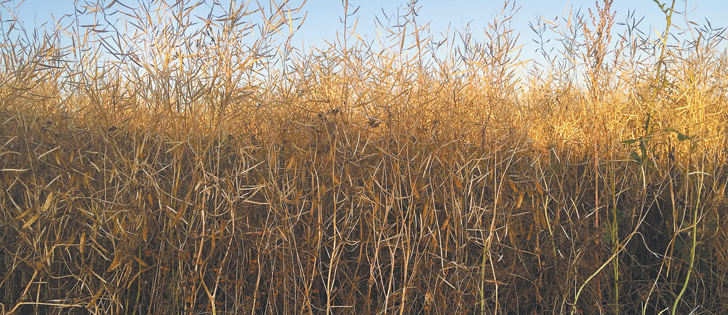Intercropping is a fascinating topic when proponents such as Colin Rosengren speak about it.
Growing multiple crops on the same field at the same time goes against more than 100 years of agricultural orthodoxy.
The goal for mainstream farming, and the assumed route to optimum profit, is to have a uniform crop of one species and eliminate all competition from weeds.
So eyebrows rise when a farmer like Rosengren says he can improve his soil, reduce herbicide and fungicide use and make significantly more net profit from growing canola, peas and red lentils together in the same field than he can growing them separately.
Read Also

Downturn in grain farm economics threatens to be long term
We might look back at this fall as the turning point in grain farm economics — the point where making money became really difficult.
It generates many questions about the details of seeding multiple crops, how the mixture performs regarding weed and disease pressure, how to time the harvest of crops with different maturity, how to separate the grains once they are combined and how the system affects crop quality.
Also crop insurance company reluctance to cover mixed crops is a major barrier.
The intercropping experiences of Rosengren of Midale, Sask., and Ryan Boyd of Forrest, Man., were covered in the March 2 Western Producer.
They are producers who think outside the box. Rosengren is a particularly interesting farmer who not only experiments with cropping alternatives but also is deeply involved with the development of the innovative CleanSeed CX-6 Smart Seeder now appearing at many shows and farm demonstrations.
And he is a partner in Three Farmers, a processor and marketer of cold pressed camelina oil as well as a snack food using roasted chickpeas.
He is not a fanatic out on the fringe.
And yet intercropping and other cropping and field management experiments are usually on the fringe when it comes to agricultural research funding.
They are studied by a team in plant science at the University of Manitoba, the Land Institute in Salina, Kansas, and others. Canola-pea combinations, peaola, might be the best studied. But the resources allocated pale compared to crop breeding and pesticide development.
That is no surprise. New systems do not generate profits for the developer like new products can. And a higher yielding variety or a better fungicide is more likely to be widely adopted and its value is easier to calculate.
Such products advance modern, high technology farming that is, by many measures, wildly successful.
But it is not irrational to question the sustainability of current practices when facing the growing problems of herbicide resistant weeds, expanding crop disease, rising input costs and uncertain climate.
Perhaps a larger allocation of resources into research into systems that more closely mimic nature’s complexity could be our contingency plan. There must also be a way to insure these crops.
With more study and support, inter-cropping might become a popular, profitable and sustainable option.
The concept has been successful before.
The aboriginal people of North America practiced a form of intercropping with their three sisters — corn, beans and squash.
The beans fixed nitrogen from the air, corn provided support for the bean’s vine and squash provided ground cover to hold soil moisture while its spiny stems protected the crop from browsing animals.
Bruce Dyck, Barb Glen, Brian MacLeod, D’Arce McMillan and Michael Raine collaborate in the writing of Western Producer editorials.

















